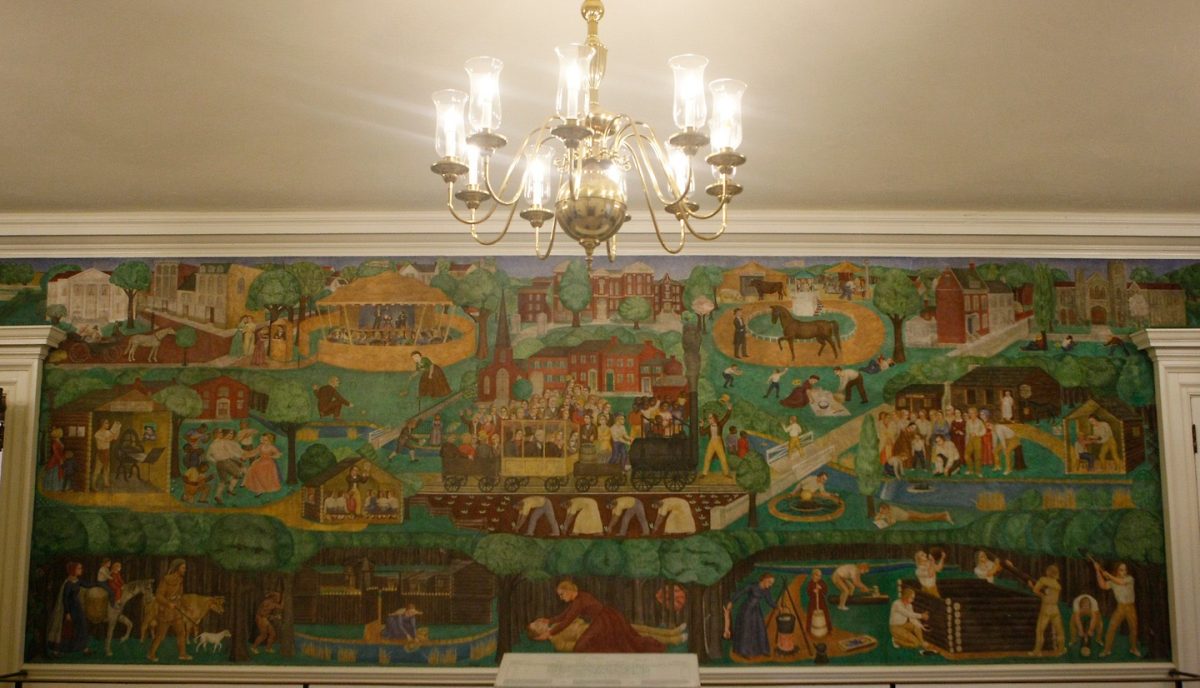Poet Wendell Berry and his wife’s lawsuit against the University of Kentucky’s plans for the removal of a controversial mural in Memorial Hall was dismissed, but the judge said the mural cannot be destroyed.
UK’s motion to dismiss the lawsuit was granted on Thursday, March 14.
“We are pleased that the judge has dismissed the case,” UK Spokesperson Jay Blanton said. “Our plans continue to be (to) maintain and ultimately move the mural.”
The lawsuit was filed in 2020 by Wendell Berry and his wife Tanya to prevent the removal of the mural after UK President Eli Capilouto announced the mural would be taken down.
The mural was created by artist Ann Rice O’Hanlon in 1934. O’Hanlon was commissioned to paint the mural as part of the federal Public Works of Art Project. The Depression-era Civil Works Administration funded the mural.
The O’Hanlon Mural, meant to portray the history of the Bluegrass region, contains depictions of slavery which caused it to be a controversial subject among students.
The controversy around the mural grew following student protests. After a group of students conducted a sit-in at the Main Building in 2019, the university covered the O’Hanlon mural.
Following the 2020 announcement that the mural would be removed, the Berrys put forward an action to prevent the university from removing or destroying the mural.
Because the University of Kentucky, a public university supported by tax money, owns the work of art, the Berrys’ reasoned that they as taxpayers would be able to challenge the university’s actions regarding the mural.
Franklin Circuit Court Judge Thomas D. Wingate found in his ruling that the Berrys did not have standing to bring forward the action.
Standing is a person or party’s capacity to bring an action or suit to court. In order to have sufficient standing, the plaintiff (the person or party bringing something to court) “must have suffered an ‘injury in fact’ which he or she can casually connect to the conduct at issue,” according to the court documents.
The court found in earlier precedent that the Berrys’ reasoning behind their suffering of an injury from the mural being taken down “is not concrete and particularized to them but is ‘shared in substantially equal measure by all or a large class of citizens,’ namely any other citizen of this Commonwealth.”
However, the court upheld the ruling that the university must not take down the mural and continue to maintain it, as removing the mural would result in its destruction according to records.
The 1943 mural is a fresco, a painting painted onto a wet wall or plaster and therefore part of the structure itself. It was ruled that damage of the plaster it is a part of would destroy the painting.

Furthermore, the destruction of the mural would be “a clear stand against education, art and history,” Wingate said in the ruling.
“The destruction can be viewed as an attempt to erase from history the disparate treatment they (African Americans) received while literally working to establish this commonwealth,” Wingate said.
In 2018, the university commissioned artist Karyn Olivier to create another work of art in Memorial Hall. The work is titled “Witness” and was meant to form a dialogue with and contextualize the 1934 mural.
“When paired with Witness, these murals offer varying perspectives,” Wingate wrote. “Olivier has created an outstanding response to the O’Hanlon Mural and her stated purpose to ‘honor black and brown Kentuckians and deepen the dialogue around this controversial and polarizing artwork’ would be fractured by removing the O’Hanlon Mural.”
According to Blanton, Memorial Hall has been closed since 2020. The doors to the building are locked and it is not open for visitation.
“President Capilouto closed it as questions and concerns continued around the mural,” Blanton said.
While plans ultimately remain to move the mural, there is no timetable for that process to begin due to Wingate’s decision.
































































































































































